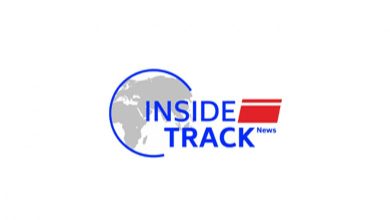‘Only thing that they can’t have is a nuclear weapon’: Trump draws hard line on Iran ahead of talks | World News

Donald Trump is betting on a “vulnerable” Iran, following a tumultuous 18 months in the Middle East, to get it to abandon its nuclear programme.In a fresh series of efforts, talks are expected to begin this weekend in Oman, where Trump’s Middle East envoy Steve Witkoff and Iran’s Foreign Miner Abbas Araghchi will both be present. Whether they meet directly or communicate through intermediaries remains unclear.
The decision for the two sides to talk was announced Trump in the Oval Office this week alongside Israeli Prime Miner Benjamin Netanyahu, in a move that comes as a bit of a surprise.
Story continues below this ad
The US President said he prefers a diplomatic solution, but warned that Iran will face “great danger” if talks don’t go well. Since Trump pulled the US out of the Obama-era nuclear deal during his first term, finding a pathway to a new agreement has proven difficult, with experts warning that the prospects of US military action on Iranian nuclear facilities appear higher than they have been in years.
“His ultimate goal and the ultimate objective is to ensure that Iran can never obtain a nuclear weapon,” White House press secretary Karoline Leavitt told reporters Friday, as per AP.
“But he’s made it very clear to the Iranians, and his national security team will as well, that all options are on the table and Iran has a choice to make. You can agree to President Trump’s demand or there will be all hell to pay,” she added.
The push comes as Iran faces a series of major setbacks that have left Tehran in a weaker negotiating position, and possibly more willing to talk.Story continues below this ad
Why is Iran in a ‘vulnerable’ spot?
Over the past year, the military capabilities of Iranian-backed proxy forces, Hamas in Gaza and Hezbollah in Lebanon, have been significantly degraded Israeli forces. Meanwhile, US airstrikes targeting Iran-backed Houthi militants in Yemen have destroyed key infrastructure, including oil refineries, airports, and missile sites.
Israel also carried out strikes against Iran in October, damaging facilities tied to Tehran’s nuclear and ballic missile programmes. The situation worsened in December, when Iran lost one of its closest allies in the region, Syrian President Bashar Assad, who was ousted after more than two decades in power.
The leaders of the Islamic Republic are also facing pressure on the domestic front. Iran’s economy remains under heavy strain due to years of international sanctions. Earlier this week, US Treasury Department announced a new round of sanctions targeting five entities and an individual that American officials say play key roles in Iran’s nuclear programme, further isolating Tehran and tightening the pressure on its leadership.
“All eyes are on Oman Iranians following this very closely and potentially hoping that this would impact the state of the economy,” said Negar Mortazavi, a senior fellow at the Centre for International Policy, a Washington-based think tank.Story continues below this ad
However, it remains unclear whether the United States can offer Iran enough incentive to meet President Trump’s demands, which call for a deal more restrictive than the 2015 nuclear agreement brokered under President Obama. That deal had placed strict limits on Iran’s nuclear activity, allowing only a small amount of uranium enriched to 3.67%, far below weapons-grade. But since US pulled out of the agreement, Iran has significantly ramped up its nuclear stock. It now possesses enough material to build multiple nuclear weapons, with some enriched to 60%, dangerously close to the threshold needed for weaponisation.
As both sides prepare to meet this Saturday in Muscat, there’s uncertainty over how the talks will unfold. While Trump has said the negotiations will be direct, Iranian officials maintain that the talks will be indirect, with Omani intermediaries carrying messages between the two delegations, who will be stationed in separate rooms.
President Masoud Pezeshkian again pledged this week that Iran’s “not after a nuclear bomb” and even suggested Tehran could be open to the prospect of direct American investment in the Islamic Republic if the countries can reach a deal.
How much room is there for negotiation?
National security adviser Mike Waltz has said Trump wants the “full dismantlement” of Iran’s nuclear programme, adding, “That’s enrichment, that is weaponisation, and that is its strategic missile programme.” But Trump left greater space for negotiations: “The only thing that they can’t have is a nuclear weapon,” Trump told reporters as he met with his Cabinet secretaries Wednesday.Story continues below this ad
Witkoff also has signalled that the adminration could be amenable to a deal that is less than full nuclear disarmament.
“Where our red line will be, there can’t be weaponisation of your nuclear capability,” Witkoff said in a Wall Street Journal interview published Friday.
What is the Lia Model that Benjamin Netanyahu is pushing for?
Israeli Prime Miner Benjamin Netanyahu, who met with Trump on Monday, said he supports a deal with Iran similar to the one made with Lia back in 2003. In that agreement, Lia’s former leader Moammar Gadhafi gave up his secret nuclear program completely.
However, Trump doesn’t seem fully on board with that idea. “But Trump has notably not embraced Netanyahu’s push for the Lia model,” said Trita Parsi, executive vice president of the Quincy Institute for Responsible Statecraft, another Washington-based think tank.Story continues below this ad
“If it’s narrow, if it’s focused on the nuclear programme, if the goal of the US is to prevent a nuclear weapon, then there is a likelihood for success,” Parsi said. “And it’s under those circumstances that I suspect that you will see talks, perhaps in rather short order, be elevated.”
(With inputs from AP)







